A 365-Day Project
"We Are All Mozart"
A project to create
new works and change
the perception of the
music of our time.

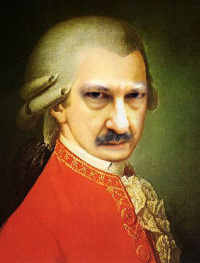
 October 7, 2006
October 7, 2006 
Last night's premiere of Eventide wasn't bad. But before a concert report (I'll leave that until tomorrow, after tonight's second performance), there will be commentary about notation. Again, yes, but it's really to make at least one descriptive term clear: "Nineteenth century notation."
Yesterday on the Finale notation list, a musician wagged a virtual Rumsfeldian finger, writing, "Written musical notation is continuously and seamlessly evolving, and its current form can be characterized as '19th century' only as a deliberately inaccurate pejorative. You need to stop that."
Hah. Aside from being delusional, this guy's wrong, if only because the topic was music notation software. He can be forgiven for a reading deficiency, but at least it gets out in the open a simmering resentment between composers and publishers for the better part of a century. Music publishers are businesses, and their interest in art is switched on only so long as it coinicides with their ability to make the payroll. But that's a given in a corporatized environment, even with little arts companies. The social commitment to artistic creation is dead.
Profit comes into play because coincident with the hyper-capitalistic trends came the fastest and deepest development in notational practice in the history of written music. This is the fortieth anniversary of the publication of Erhard Karkoschka's Das Schriftbild der Neuen Musik, published in the U.S. six years later as Notation in New Music. Though notation has continued to evolve in these forty years, the most explosive development took place between 1920 and 1970, a good part of which Karkoschka has captured. (I bought the book on its U.S. release for $29. The used price is now $530.) However, an examination of SoundVisions (Torsten Möller, Kunsu Shim, Gerhard Stäbler), published last year, shows that development has continued, albeit at a slower pace.
The examples from Karkoschka's book are largely hand-written manuscripts or hand-inked fair copies, as one would expect during an era when music typography was an expensive process, and music engravers were still engraving on metal plates. However, SoundVisions shows, aside from traditional notation, no change from the hand-inked circumstance -- despite more nearly twenty years of available computer music engraving.
What has happened? Nothing. Absolutely nothing. The software adopted the notational symbology and techniques straight out of the Nineteenth century -- measure-based, horizontal, graphics-free, note-bound workflow lifted right from the engraver's metal plates. Advances made as early as 1900 do not appear in software more than a century later.
The fundamental distinction between a contemporary notation program and an engraving program needs to be made. If a notation program is considered to be exclusively a graphical program, then almost anything is possible. However, the efficiencies in software are gained by what the software handles natively, not what can be forced into place. In such circumstances, one can just as easily (or with just as much difficulty) create a contemporary score in an advanced graphics program. But the true advantage of notation programs comes from the fluidity of the interface, that musical information can be entered in musical ways, and that proofing, playback and studio features are available. Without these musical concepts, the software is little smarter than me humming along with my Osmiroid music-writing pen.
Though I have tried Sibelius, Igor, Graphire and Score, I work with Finale. For the interests of a notationally wide-ranging present-day composer, it seems to me to be -- despite its history as an unmanageable and unlearnable morass -- the most flexible program with the greatest number of actions that can be assigned by musical activity and can be assigned musical purposes. But it still, at heart, is based on Nineteenth century models of notation, and it represents its internal data in that fashion. (Consider the presentation of visual content on the web if it were limited to Nineteenth century models of publication.)
But without examples, these grand statements are meaningless. So let's have at it with the following brief chart of notational features in use after 1900. (My example is Finale, but those with experience in other programs are welcome to send me a list to fill out the options. Also, corrections are invited, but my definition of "natively supported" is strict -- no workarounds and juggling of bits & pieces.)
| Notational Item | Natively supported? | Workaround or technique? | Playback supported? |
| Percussion symbology. | Special font | ||
| Contemporary articulation symbols. | Special font | ||
| Empty or alternate noteheads. | Special tools or staff styles | ||
| Stemless notes. | Special tools or graphical kluge if stemless with beams | ||
| Staff lines other than five. | Graphical kluge for ledger lines | ||
| Beam over barlines. | Third-party plugin or graphical kluge | ||
| Feathered beams. | Special tools | ||
| Boxes and circles. | Graphical kluge, and no layering available | ||
| No barlines. | Staff styles, individual removal, and notation adjustments | ||
| Staggered barlines. | Graphical kluge | ||
| Broken (through) beams. | Graphical kluge | ||
| Beamed flags. | Graphical kluge | ||
| Tone clusters. | Move notes or special font | ||
| Quarter-tones. | Change key signature | ||
| Other microtones. | Special font | ||
| Circular accidentals. | Special font | ||
| Fractional tuplets. | Graphical kluge | ||
| Interwoven tuplets. | Graphical kluge | ||
| Angled stems. | Graphical kluge | ||
| Rotatable symbols. | Graphical kluge | ||
| Stretchable graphic elements. | Graphical kluge | ||
| Drawing graphics (curves, writing, etc.) on-page. | Graphics tool | ||
| Linear (time-based) notation. | Graphical kluge | ||
| Curved, bent or circular staves. | |||
| Two-dimensional (grid) staves. | Graphical kluge | ||
| Vertical or angled staves. | Graphical kluge | ||
| Arbitrary (wavy, square, diminishing) 'continue' lines. | Graphical kluge | ||
| Curved arrows. | Graphical kluge | ||
| Broken (through) arrows. | Graphical kluge | ||
| Half-slurs or half-ties. | |||
| Equitone or Klavarscribo. | |||
| Score elements in color. | |||
There is a staggering number of no's and kludges. Why does this exercise me so much? They are possible aren't they? Sure -- with a pen.
Even among creative people such as composers, and particularly when the creative activity is secondary (music engraving), artists are limited by their tools. Their imagination may stretch well past the tools, but in practice, one has to produce materials for performance. Among those in a forward-looking musical community, among musical friends, or where a reputation is established so that performers are willing to (or paid to) spend time and energy creating a piece from hand-drawn materials, the tools -- pen and ink -- are not a barrier. But materials move out of the circle of acquaintances. Publishers, even small publishers, take them on. Some publishers reprint composers' manuscripts, as with Gunther Schuller and John Cage. The latter's Music of Changes is in my library, and I see it is inked in what looks to be the composer's hand. In the recent past, calligraphers and engineering drawing experts were hired, and more recently, specialists working in a combination of programs (such as Score, Finale, and Illustrator) to create fine graphical renderings.
The economics of self-publishers and small publishers militate against hiring graphic artists. Some large publishers now even expect materials from "less profitable" composers to be submitted in digital format, camera-ready. One of my engraving clients is a well-known composer whose publisher expects him to provide ready-to-print pages, and he is not prepared to learn software as well as be a composer, so his compromise is to pay for the engraving, knowing that ultimately he may have a few performances -- but, as with a beginning composer and not one of his stature, the joy of performance will be his only profit.
I will use myself as an example, when I was new to Finale (and when Finale was the only option for a scoring program with playback, which was used to create demo versions). The 1970 Quartet for Winds, in its fourth movement, contained a section of independent time signatures with staggered barlines. When I engraved it using Finale 2.2 in 1993, the program would not allow separate time signatures for each staff with overlapping barlines like these, so in order to publish it -- this was before I determined how to kluge it graphically -- this is what happened:
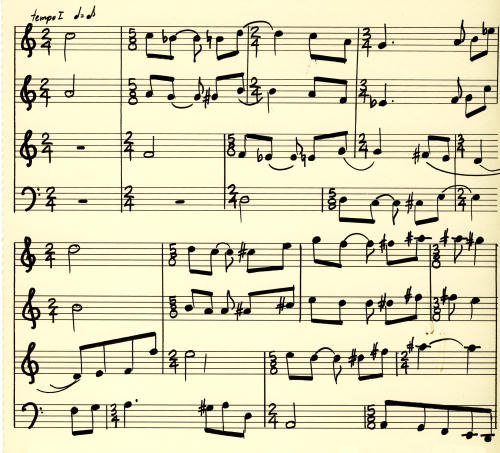
Wind Quartet (1970) fourth movement, in my hand-inked version, showing staggered barlines with vertical synchronization -- a simple piece from 36 years ago.
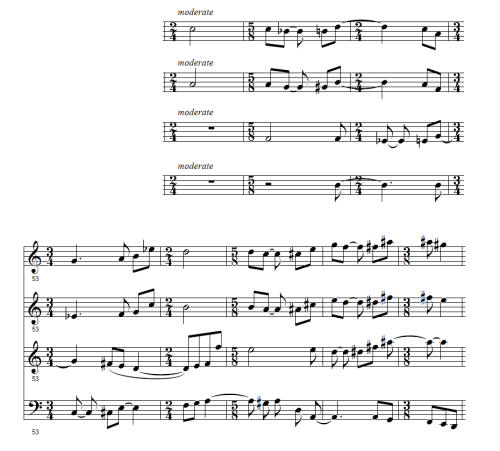
Wind Quartet (1970) fourth movement, engraved in Finale 2.2 in 1993, showing staggered barlines eliminated and the rhythms rewritten -- and the sense of the individual parts gone.
There is the reason why I call notation programs embedded in the Nineteenth century. I was a 21-year-old composer using largely traditional methods of composition which to this day defy software to work with them natively. I'm hardly alone. Tens of thousands of us work in notation normal for compositional life, and the software -- which supports only Nineteenth century notation -- chokes its dry old digital throat.
Postscript: My conclusion was omitted: As composers come up through composition using these computer notational tools, just as writers come up with computer text editing tools, they will find themselves limited by their enormous inconvenience of working outside of Nineteeth century conventions. From simple text through advanced, multi-dimensional presentation, office tools present few barriers to imaginative visual communication. Though they may not encourage imagination, they do not prohibit it in the very nature of their toolset. Computer notation programs erect enormous barriers to imagination.
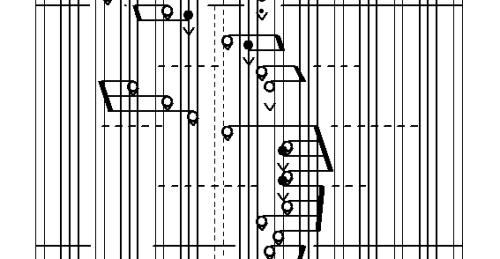
Klavarscribo example. Yes, it is read vertically. This is from Wikipedia, which shows the whole image.

Section of Hans Otte's Tropismen from 1960 (as reprinted in the Karkoschka book).
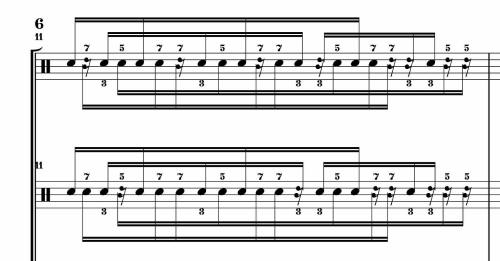
Interwoven tuplets. Short of calculating each value and hand-rebeaming, only a graphical solution exists.
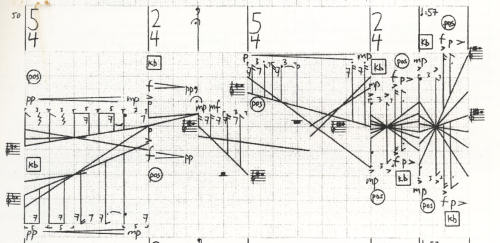
Section of Alan Hilario's Überentwicklung - Unterentwicklung from 1998 (as reprinted in SoundVisions).
Oh. I didn't mention. Last night was the first frost -- the killer frost as well, on the night of the harvest moon.
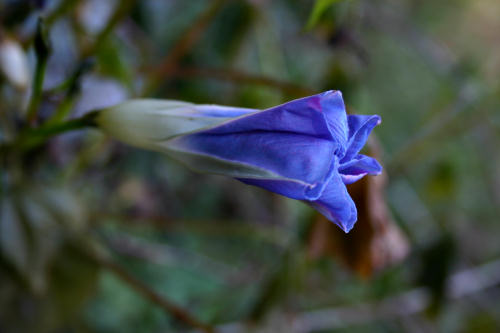
Morning glory after the killer frost, frozen in incipient bloom, where it would stay until it drooped and fell in the late afternoon sun.